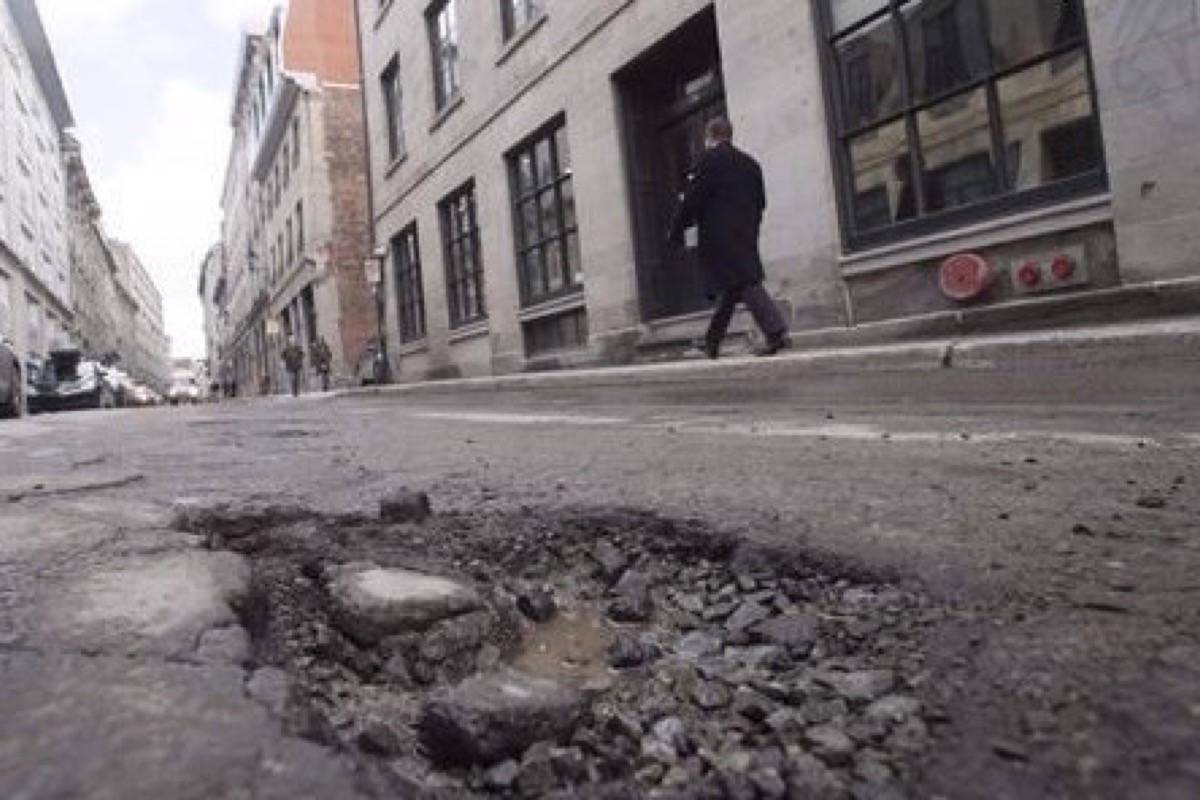Municipal and provincial governments in Canada are all looking for better ways to deal with their growing pothole problems, but none is properly tracking whether the repairs they do now are effective over time, says the author of a soon-to-be completed study on the roadway menaces.
And few appear prepared to spend the money necessary to ensure what they shovel into the car-crippling craters lasts until longer-term road repairs can be performed, says engineer Dave Hein.
READ MORE: Drivers swerve to avoid giant potholes on dangerous road near B.C. city
“Everybody says they’re trying new things,” says Hein, who calls potholes “very personal” for the countless drivers who have to pay for new wheel rims and tires and to fix bent suspensions after encountering them.
“Everybody’s looking for the magic bullet, and nobody’s got the magic bullet,” says Hein, principal engineer at Applied Research Associates, Inc., which was commissioned by the Transportation Association of Canada to uncover better solutions to pothole repairs. The association studies technical issues related to roads, highways and urban transportation.
“Nobody has performance measures,” Hein added in an interview with The Canadian Press. “And nobody even tracks to see if what they are doing is performing better than somebody else.”
Cities and towns, along with provincial and territorial governments, have been experimenting with different materials and new technologies to tackle potholes.
The cities of Ottawa and Thunder Bay, Ont., Cranbrook, B.C., and Montreal are among those that have experimented with a pothole-filling machine called the Python 5000, which mechanically fills cracks and crevices in roadways — work normally performed by manual labourers — in efforts to speed repairs and ensure they are done uniformly.
Others have tested a variety of hot and cold mixes of asphalt and other materials, hoping they find something better than what has been used in the past.
Hein’s final report to the association is due in April.
The Canadian Press



